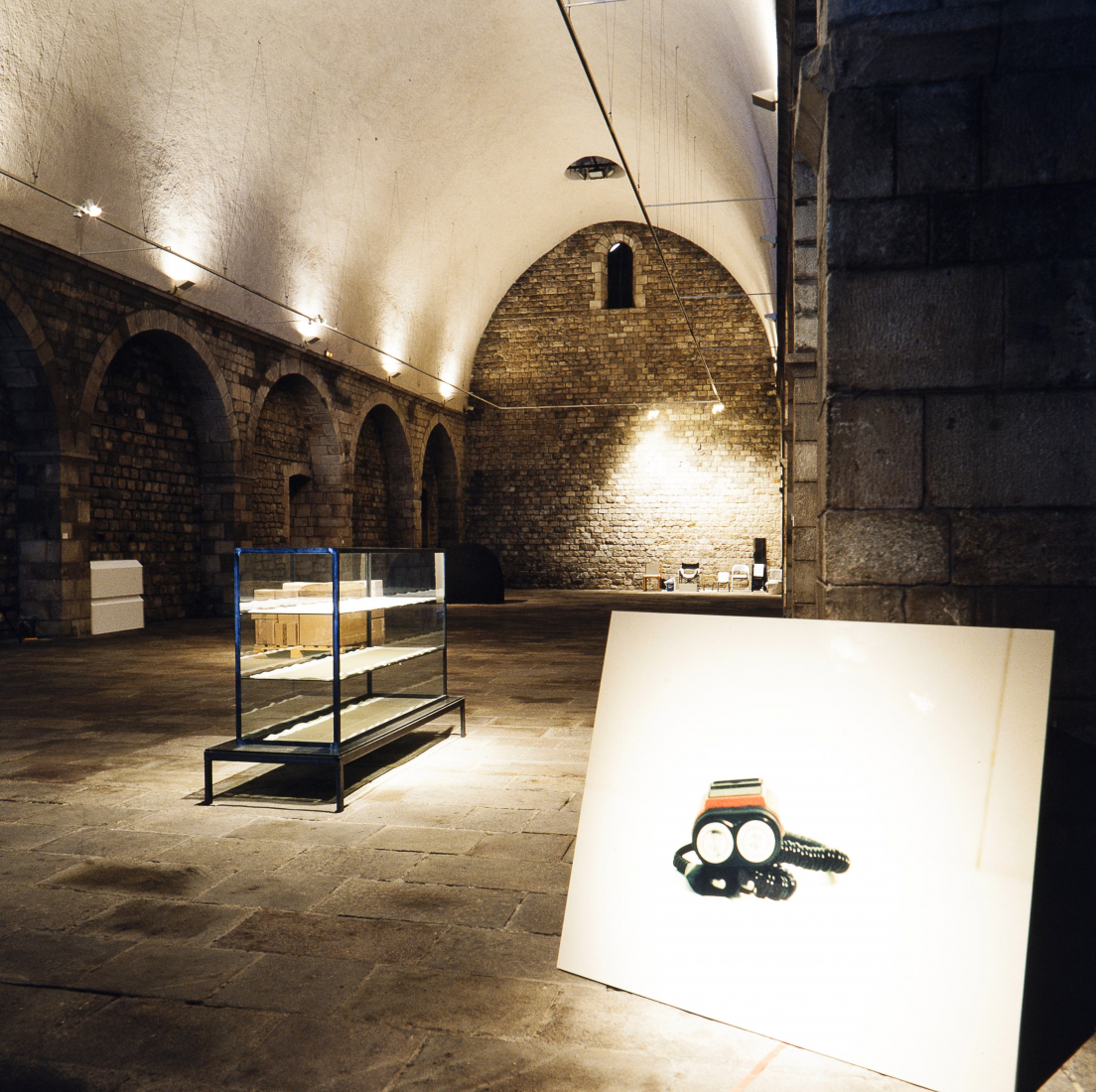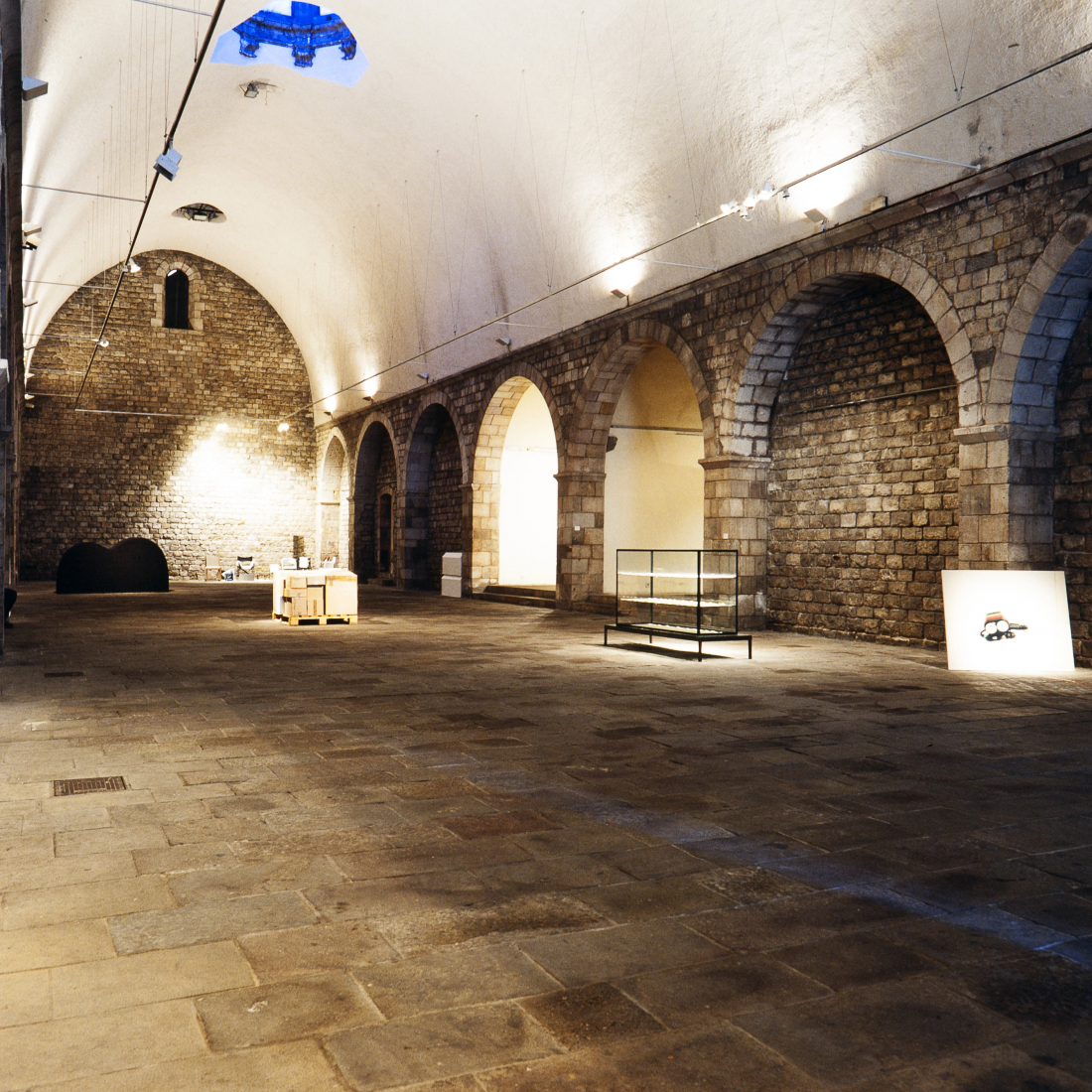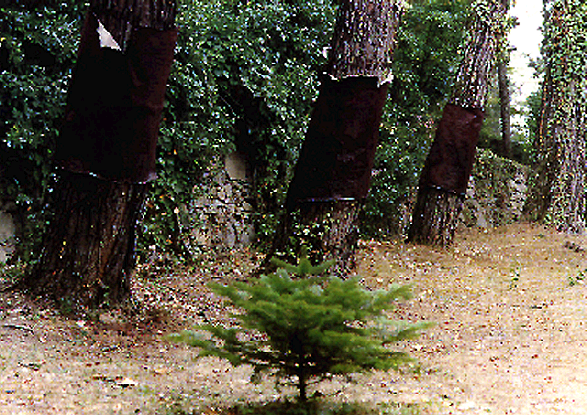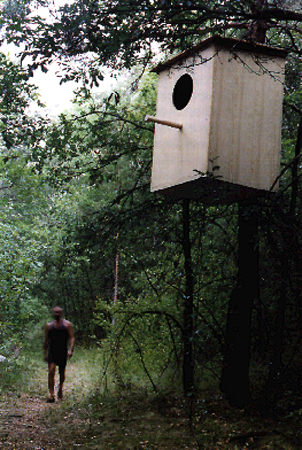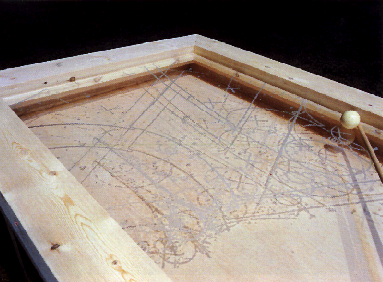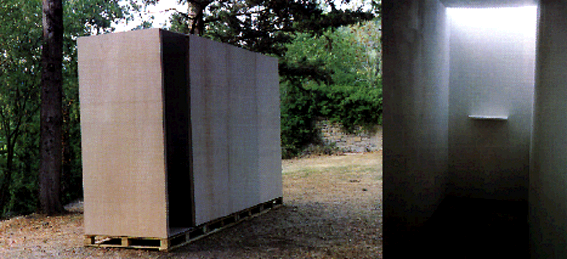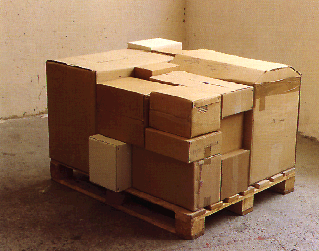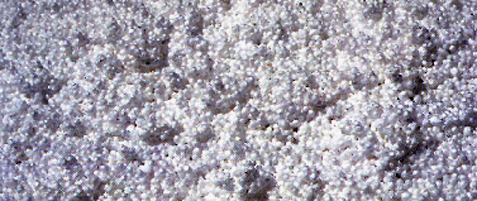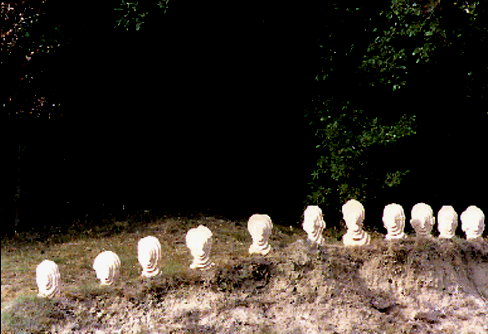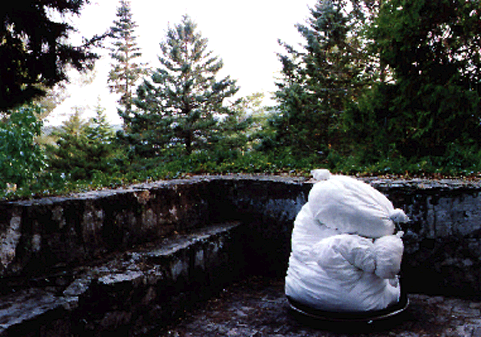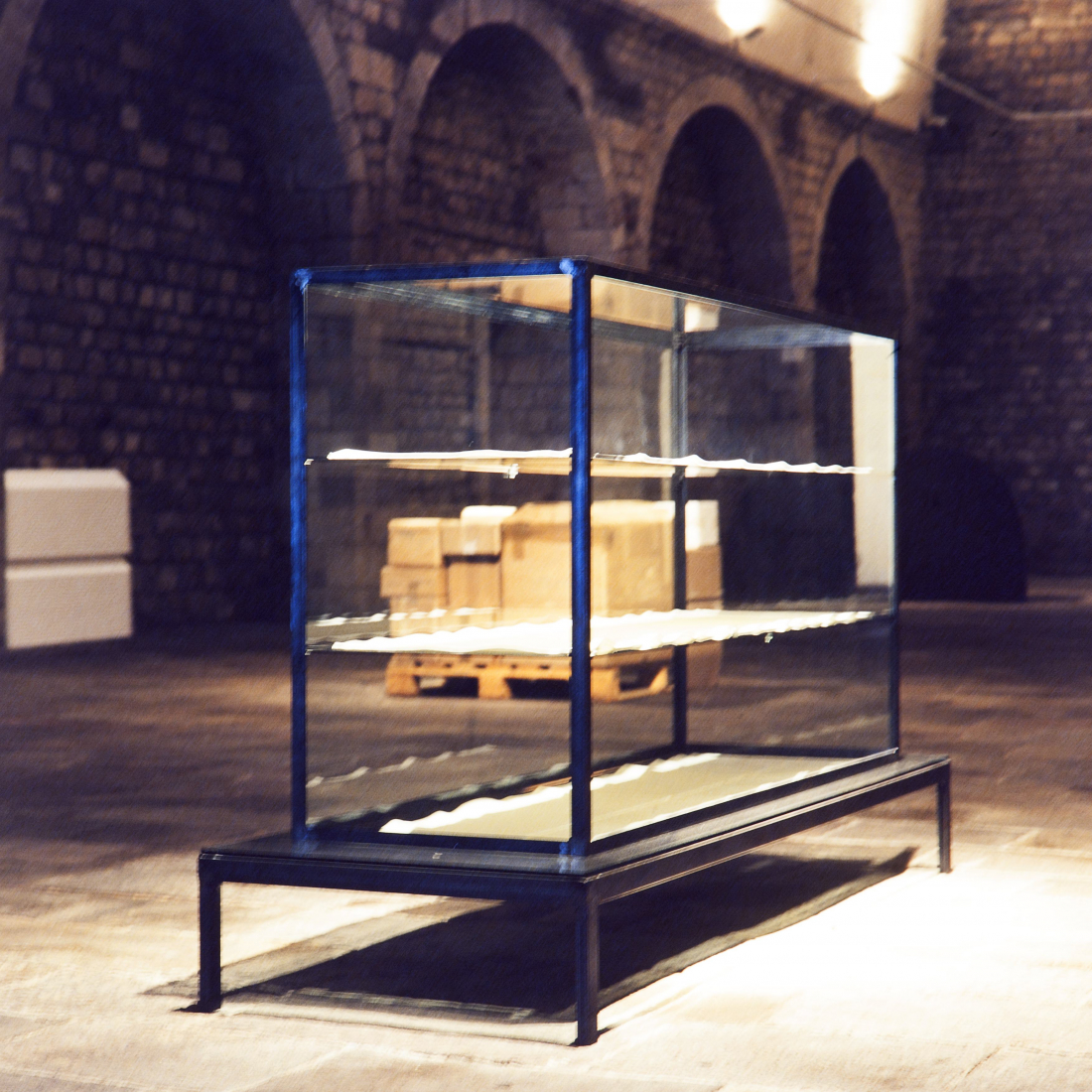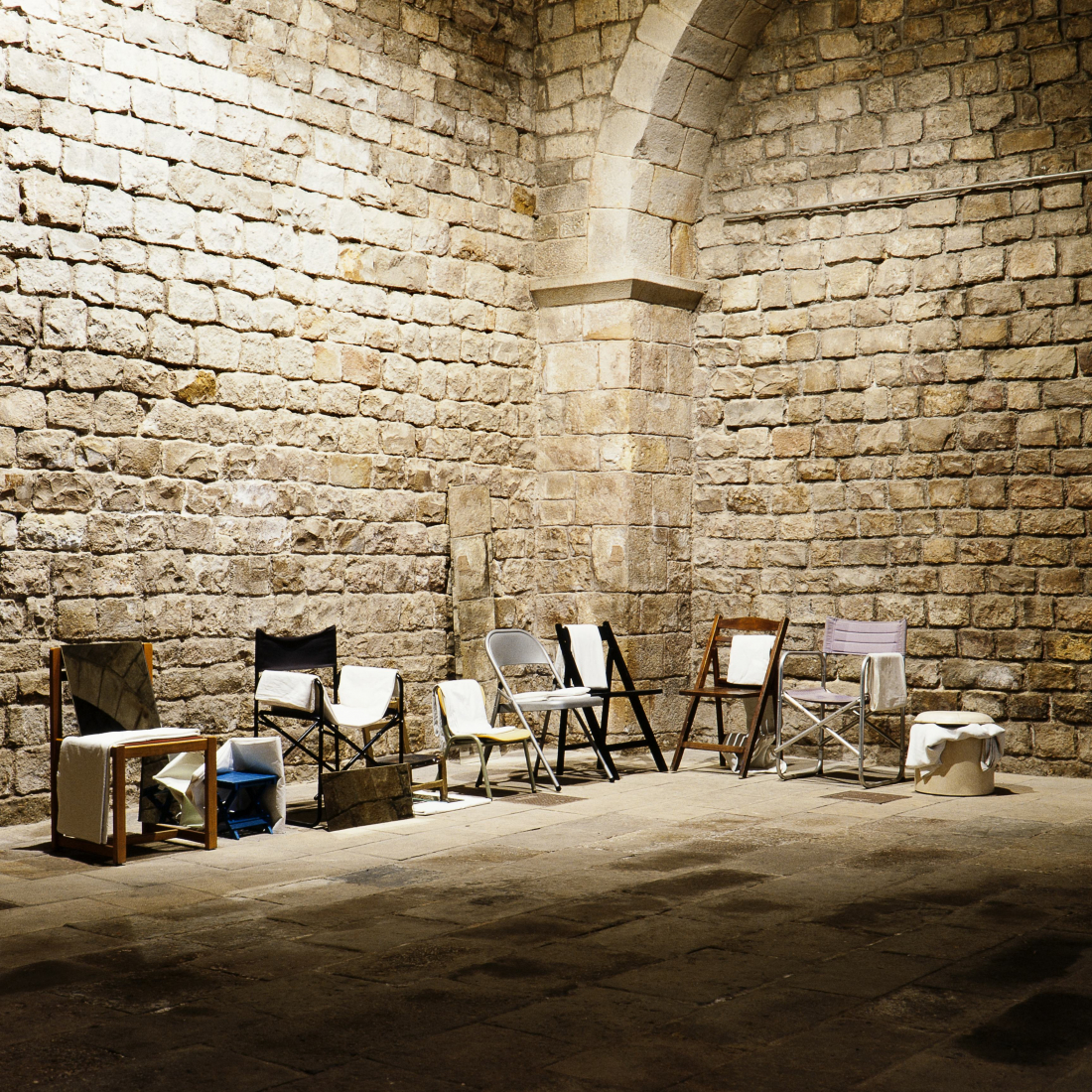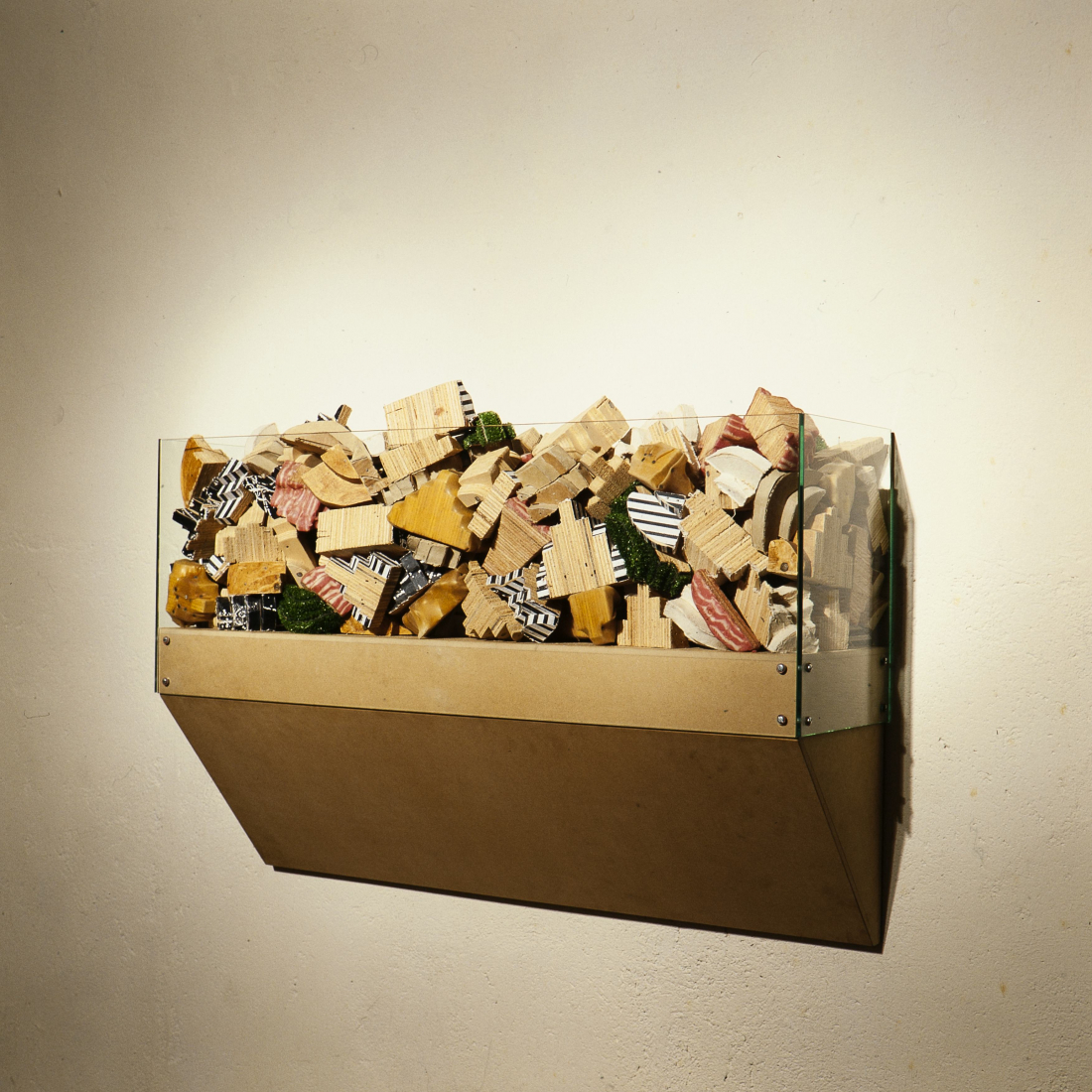Sota la carpa
In the program of workshops for young artists of the QUAM'94 (Montesquiu, from July 2 to 17), a workshop was organized by the sculptor Pedro Cabrita Reis (Lisbon, 1956). The choice of the director responded to our interest in inviting an artist from another geographical and cultural area, as in previous occasions he had done with the German painter Albert Oehlen or the English photographer Hannah Collins.
Although the work of Cabrita Reis is well known - especially for the dissemination he has achieved in participating in major international exhibitions, such as Metropolis at Martin Gropius Bau in Berlin (1991), Documenta IX in Hassel (1992), Los Last days at Las Salas del Arenal during the Expo'92 of Seville, or the individual ones in the Juana de Aizpuru Gallery in Madrid, there have not been many occasions to see it live, especially in Barcelona. In their facilities - always made with simple materials, such as stucco, wood or cloth - reality and artificiality, complexity and simplicity are kept in balance. Interior and exterior define architectural situations: spaces for experience, associative spaces defined, often, by the same title of the work (The house of white silence, River, H. Suite ...). In recent years he has focused his work on the field of the construction of devices or installations concerned with an idea of unmanageability in the contemporary world.
The proposal of the workshop of P. Cabrita Reis presented to Montesquiu was based on absolute respect for the work of each participant. The director resigned himself from imposing any kind of program that would aesthetically determine the results and preferred to act as a catalyst for energy, as a mirror that would return the potential of each artist.
During the first days each member of the workshop explained his career and defended his most recent production. Next, it was about designing an intervention project on -or starting from- the spaces of Montesquiu. Once discussed among all, and especially with the workshop director, it was necessary to formalize it. Cabrita Reis, therefore, was limited to accompany each author during the process of elaboration of the work in order to put in evidence and to promote the potentialities of each one and to clean the languages of superfluous or unnecessary aspects. Cabrita knew how to take advantage of the most positive of each creative option, stimulated the practice of self-criticism and rigorous self-sufficiency in each phase of the work.
During the production phase there was another very interesting aspect. Once projects were discussed and approved, a work system was established that ensured the optimal use of resources and time: work groups were created for each work under the direction of the author and with the assistance of the rest of colleagues. This dynamics allowed the collective intervention in the elaboration and caused a specific debate on each one of the works.
The result was a set of installations that were very interrelated with the place they occupied. In some cases the same space was part of the work. A set that reflects the state of the question in emerging art and some of its points of debate: the paradox between reality and representation (Arenós, Parera), the critique of genres, in the same recent history of contemporary art and its presentation systems (Rovira, Ayguavives, Domènec), the exploration of new possibilities for painting (Palomino, Ruiz), references to one's own experience or to personal conflicts (Akané, Palacios), etc.
The works were visited during the open days, at the end of the QUAM. In the course of the passionate debates of those last days the idea arose to give continuity to the workshop with the organization of a group exhibition. However, the presentation of the interventions carried out in Montesquiu - despite the objectual nature of some of them - was impossible: the installation in another space would nullify the meaning of most of them.
Thus, some of the workers that are exposed now have been designed and produced by each artist throughout this year, thinking about the spaces of La Capella. In this way each one has matured their languages and the workshop has grown to generate another dynamics of exchange and confrontation. The Work Workshop presented by Pedro Cabrita Reis -constructed with chairs and mirrors contributed by each artist- gives way to the experience and closes the circle that opened a year ago under the geodesic tent of Montesquiu.



